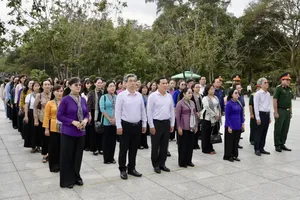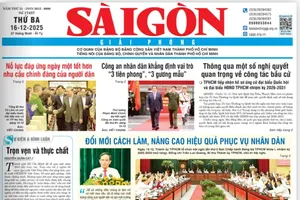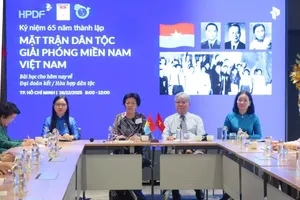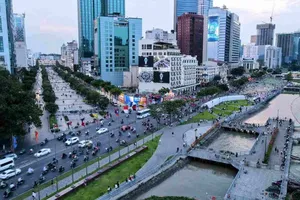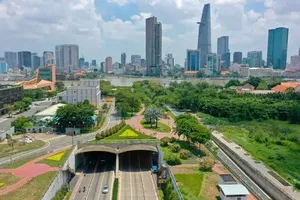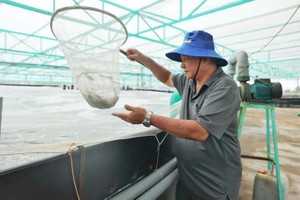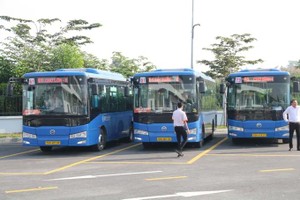Such behavior must be strictly addressed and punished to build a more civilized and modern city.
After nearly seven years of implementing Directive No. 19-CT/TU issued on October 19, 2018 by the Ho Chi Minh City Party Committee on carrying out the “Ho Chi Minh City residents do not litter in roads and canals for a clean, green and eco-friendly city” campaign, referred to as Directive 19, there have been positive improvements in reducing littering in public spaces and waterways.
Persistent pollution blackspots
Beyond clean streets in the city center such as Le Loi, Nguyen Hue, Le Thanh Ton, numerous areas across districts and Thu Duc City, Ho Chi Minh City could not escape the persistent pollution as residents have not stopped throwing waste into public places.
Hy Vong Canal is one of the largest and longest-standing pollution blackspots in Tan Binh District.
The canal route stretching from Tan Son Nhat International Airport to Tham Luong Canal turned into a massive unauthorized dumpsite for passing years.
Residents intentionally throw plastic bags, domestic waste and broken or discarded items into the canal. As a result, the water on this canal remains dark and polluted, filled with trash, and emits a foul odor.
In District 7, waste reappeared along Huynh Tan Phat Street right after authorities had cleared an unauthorized dumpsite in front of Long Phuoc Market, Phu My Ward.
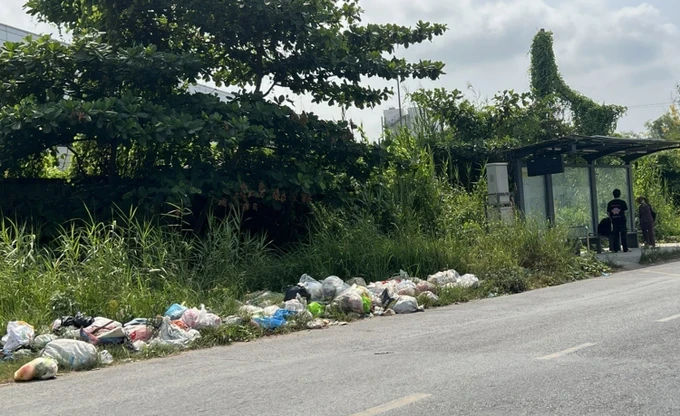
Similar situations also happened in residential areas in Thu Duc City, especially in the areas surrounding Saigon High-Tech Park, industrial parks and the National University of Ho Chi Minh City.
As reported by the Thu Duc City People's Committee, there are currently 25 long-standing pollution hotspots in the city that are difficult to address thoroughly.
Strict monitoring and penalties
Deputy Chairman of Thu Duc City People's Committee Do Anh Khang informed that before the implementation of Directive 19, Thu Duc City had 201 pollution-causing waste accumulation sites, negatively impacting urban aesthetics.
Local authorities have made efforts to address the issue, successfully transforming and rehabilitating 176 of these pollution blackspots.
However, 25 pollution sites in Thu Duc City remain uncleared, including 18 along major roads and five in vacant lots near roads or delayed projects.
To tackle these pollution sites, Thu Duc City has urged project investors to regularly coordinate with ward authorities to launch cleanup campaigns, remove waste and construct protective barriers around projects land boundaries. Besides, project investors are required to deploy patrol teams to monitor and inspect their projects, and to closely coordinate with wards to detect and report any cases who improperly disposed of waste to the public places.
At the same time, Thu Duc City has proposed that the Ho Chi Minh City People's Committee consider revoking delayed projects that negatively impact the rights and legitimate interests of residents, environmental hygiene and urban beauty.
According to lawyer Tran Dinh Dung from the Ho Chi Minh City Bar Association, Decree No. 45/2022/ND-CP stipulates administrative penalties for violations of environmental protection in public places, urban areas and residential areas, as well as for the transportation of materials and goods that cause environmental pollution.
Specifically, fines range from VND1 million (US$39) to VND2 million (US$78) for actions littering on sidewalks, roads, or into urban drainage systems, as well as dumping wastewater improperly on sidewalks or roads and disposing of plastic waste from daily activities into ponds, lakes, canals, rivers, or sea. However, in practice, violations are rarely penalized.
Therefore, to prevent littering, there are proposals for increasing fines as outlined in Decree No. 168/2024/ND-CP, which regulates administrative penalties for violations related to road traffic order and safety, and stronger monitoring measures, similar to those implemented in the capital city of Hanoi.
According to the Ho Chi Minh City Department of Natural Resources and Environment, from December 1, 2023, to November 30, 2024, a total of 2,351 administrative violation cases were detected, with fines amounting to over VND51 billion (nearly US$2 million).
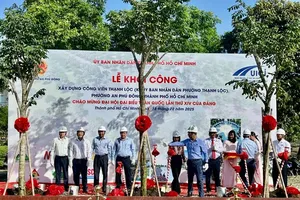

)


